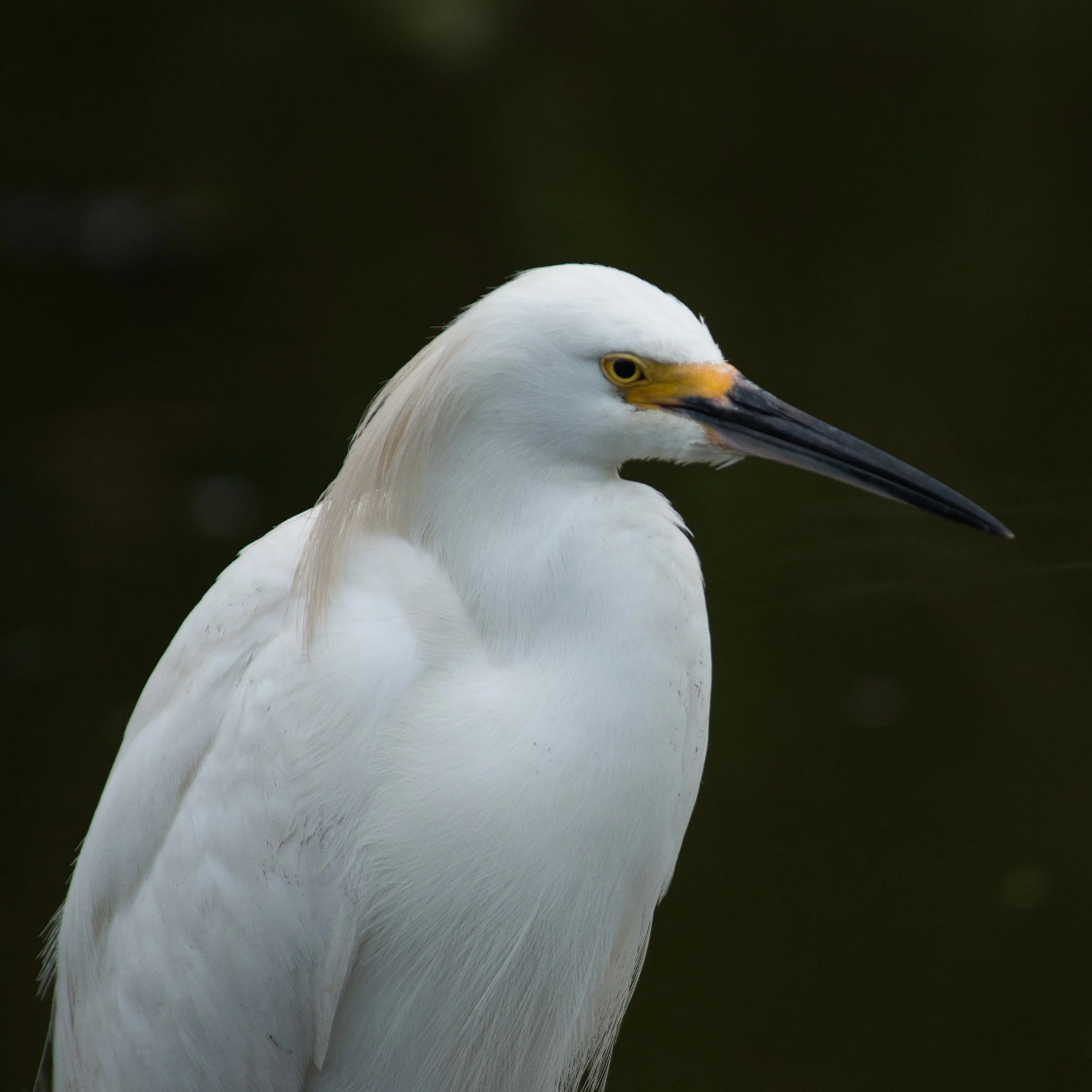The Snowy Egret
The Snowy Egret (Egretta thula), a small white heron, is a notable inhabitant of the Cypress Wetlands in South Carolina. Characterized by its all-white plumage, long black bill, bright yellow feet, and a wingspan of 39.4 inches, it thrives in diverse wetland environments such as marshes, riverbanks, and estuaries. This versatile predator's diet includes a wide range of fauna, from fish and crustaceans to small reptiles and insects. Notably, the egret exhibits various hunting strategies, from stalking prey in shallow water to standing still for an ambush. During the breeding season, snowy egrets nest in mixed colonies, with males initiating nest building and performing elaborate courtship displays to attract mates. After attracting a mate, the female finishes the nest construction with materials provided by the male, and their pale bluish-green eggs hatch after about 24 days. Once hunted to dangerously low levels for their plumes, the snowy egret is now protected by law and its population has rebounded, adding to the rich biodiversity of the Cypress Wetlands 1.
Conservation Status and Efforts
The snowy egret is not considered a threatened species. At one time, the plumes of the snowy egret were in high demand as decorations for women's hats, leading to extensive hunting that reduced the species' population to dangerously low levels. However, the population has rebounded due to legal protections under the Migratory Bird Treaty Act in the United States 1.
One notable place for the conservation of the snowy egret is the Port Royal Cypress Wetlands and Rookery in Port Royal, South Carolina. This unique environment encompasses a large open lake, a very rare Bald Cypress Swamp, and a small duck pond. It offers different habitats and learning opportunities about the importance of nature and the diversity of these special habitats. The wetlands have been developed with help from the Audubon Society, and the Friends of Cypress Wetlands, a 501c3 corporation, has been formed to ensure that future generations can experience the beauty and benefits the wetlands offer the town of Port Royal 2 3.
The Port Royal Cypress Wetlands and Rookery is a haven for birdwatchers, supporting a diversity of bird life. This includes large concentrations of white ibis, herons, egrets, neo-tropical migrants, raptors, shorebirds, wading birds, and waterfowl. The site features a trail system and informational signage about the wildlife found at the wetlands, enhancing the visitor experience and education 3.
The snowy egret breeds in mixed colonies, which may include other species like great egrets, night herons, tricolored herons, little blue herons, cattle egrets, glossy ibises, and roseate spoonbills. This species' breeding behavior includes an elaborate courtship display to attract a mate. Once a mate is secured, the male begins building the nest in a tree, vines, or thick undergrowth and the female completes the construction. The nests are made from twigs, rushes, sedges, grasses, Spanish moss, and similar materials and may be 15 inches across. Up to six pale bluish-green eggs are laid, which hatch after about 24 days1.
Please note that I was unable to find specific conservation efforts targeted at the snowy egret beyond the information provided above. For more detailed information on specific programs or initiatives, I recommend reaching out to bird conservation organizations or local wildlife agencies in the regions where the snowy egret is found.

































